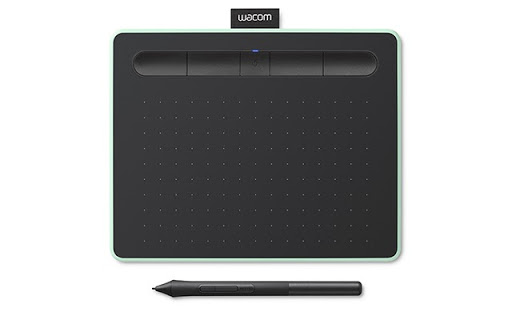

It’s smooth, fluid and feels so comfortable that my mind was screaming at me for trying to switch to a new program. I remember it being difficult at first, but using it is like breathing for me now – I don’t have to really think about it, it just happens. I’ve used Photoshop for the last 10 years. Your edge control – which is super critical as an illustrator – will be on another level with Clip Studio Paint’s tool. Photoshop paint mixing is more like pulling paint into each other while Clip Studio is a true blend. This isn’t something you have to get used to, you’ll feel it. And trust me, you’ll know right away what I’m talking about. I can’t really explain to you why the blend tool feels so amazing on Clip Studio and why its Photoshop equivalent, the mixer brush, feels so terrible. When I tried the Clip Studio Blending Tool … you know when you suddenly see a “God Ray” come down, seemingly from Heaven, and you hear that angelic AAAAHHH? It felt like that. I always imagined what blending paint should feel like as a digital artist, and Photoshop’s Mixer Brush always felt so uncomfortable. Where Photoshop feels like I’m pulling paint unnaturally, Clip Studio made blending feel easy and instinctual. The reason I’m drawn to Clip Studio and captivated by the program is the blending tool. And as a digital artist, I want the program that will allow me to express my vision as seamlessly as possible. Since every studio uses the Adobe suite, it can feel like Photoshop is the smart solution for digital art - but that doesn’t mean it’s the best one. Digital drawing and painting was synonymous with Photoshop. Pretty much every major studio was using the Adobe Creative Suite to create the next generation of media and entertainment. By 2012, Adobe had launched the Creative Cloud and with it, its suite of landmark industry applications.

Clip studio paint pro wacom intuos software#
The digital art software landscape in 2012 may have been the launch for Clip Studio, but it was 18 years after Craig Mullins started using Photoshop for all his digital commercial artwork. It was designed for painting, and the tools cater to that workflow – making digital painting feel effortless. Digital Painting may not have been on Adobe’s radar, but it was the force behind the creation of Clip Studio. And the best part was that they could take advantage of all the advancements drawing software had made over the years while innovating many of their own.Īgain, the important distinction here was their primary focus – digital artists. It was great timing, because even though Adobe was dominating the digital art market, there was rising demand for digital illustrations. Originally, their parent company Celsys was looking to help animators, then comic artists, and finally illustrators.

The rise of Clip Studio PaintĬlip studio, on the other hand, was built with a primary focus towards digital art. Adobe got the jump on any competitors and created more programs designed to help all aspects of the design industry – Illustrator, InDesign, Premiere, and After Effects to name a few. Over time, they developed tools that were mutually beneficial to illustrators and photographers, but the primary focus has always been towards photo editing. Layers were game-changing for editing photos, but even more so for digital illustrations.ĭigital painting wasn’t on Adobe’s radar because it simply didn’t exist like we know it today. I’m guessing that had something to do with it. That’s the year they invented layers in Photoshop, by the way. Craig Mullins – one of first digital artists and widely considered the father of Digital Painting – was painting digitally for 10 years with a mouse before he switched to completely digital in 1994. Photoshop wasn’t built for digital artists, but that hasn’t stopped illustrators from using it from the beginning. You can use Photoshop to paint and Clip Studio to edit a photo, but there are fundamental differences between the two because of their focus.

The important distinction between Photoshop and Clip Studio is what they were built for. Clip Studio Paint was designed for artists Adobe Photoshopīefore we go any further, I want you to understand why I tortured myself to learn a new program when I was perfectly capable of using Photoshop, and why I think you should too.
Clip studio paint pro wacom intuos how to#
Hopefully, I can help you skip all that and show you how to quickly adopt the tools of Clip Studio Paint to create your own works of art. I may be a lot more comfortable using Clip Studio now, but it had some intense growing pains. It’s incredibly scary to learn a new program – especially one with a steep learning curve.


 0 kommentar(er)
0 kommentar(er)
